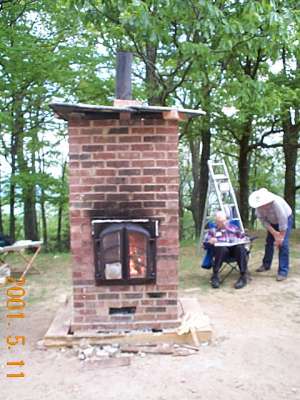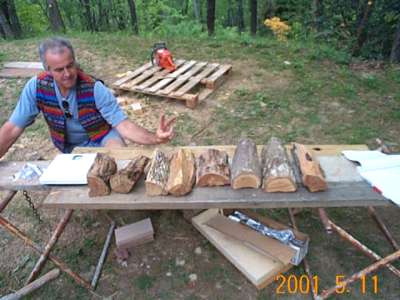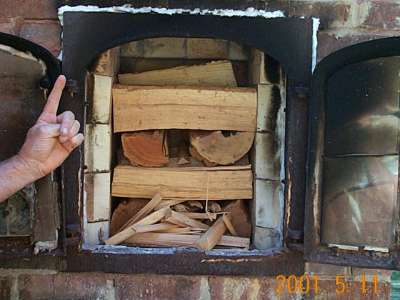
Clearance to Combustibles Testing
MHA Annual Meeting, Wildacres, NC
May 7-13, 2001

Introduction
Description of Test
Results
Discussion
Conclusions
Photos
Introduction: (Return to top of page)Efforts are under way to update the clearances to combustibles
requirements for the In order to obtain baseline data to serve as a basis for discussion, a
test heater was built The left half of the heater (viewed from the rear) used a mineral
wool expansion joint, and the right half Description of Test (Return to top of page)The heater was a small contraflow heater with a 36" x 24"
overall footprint, and a
Surface temperature readings were taken at 13 points on the heater at 30
minute intervals, The data locations were as follows:
Results: (Return to top of page)
Discussion: (Return to top of page)The right half of the heater ran hotter, indicating better heat transfer
through the cardboard.. UL-127 Temperature limits on combustible surfaces are: 90F over ambient room temperature for unexposed (ie., in contact and
covered) surfaces Testing done at Lopez in January 2000, indicates
that in order to obtain 117F above Conclusions: (Return to top of page)The heater suface did not exceed 350 degrees Fahrenheit with 500% overfiring. However, it is likely that surfaces temperatures would have been higher on
an indoor test |

Test heater

Fuel load #2. Individual pieces are labelled, weighed, and measured
for length, circumference and moisture.

Fuel load #1. Pieces are stacked in standard order according to
their labels.
This page last updated on August 18, 2008
This page created on June 14, 2001